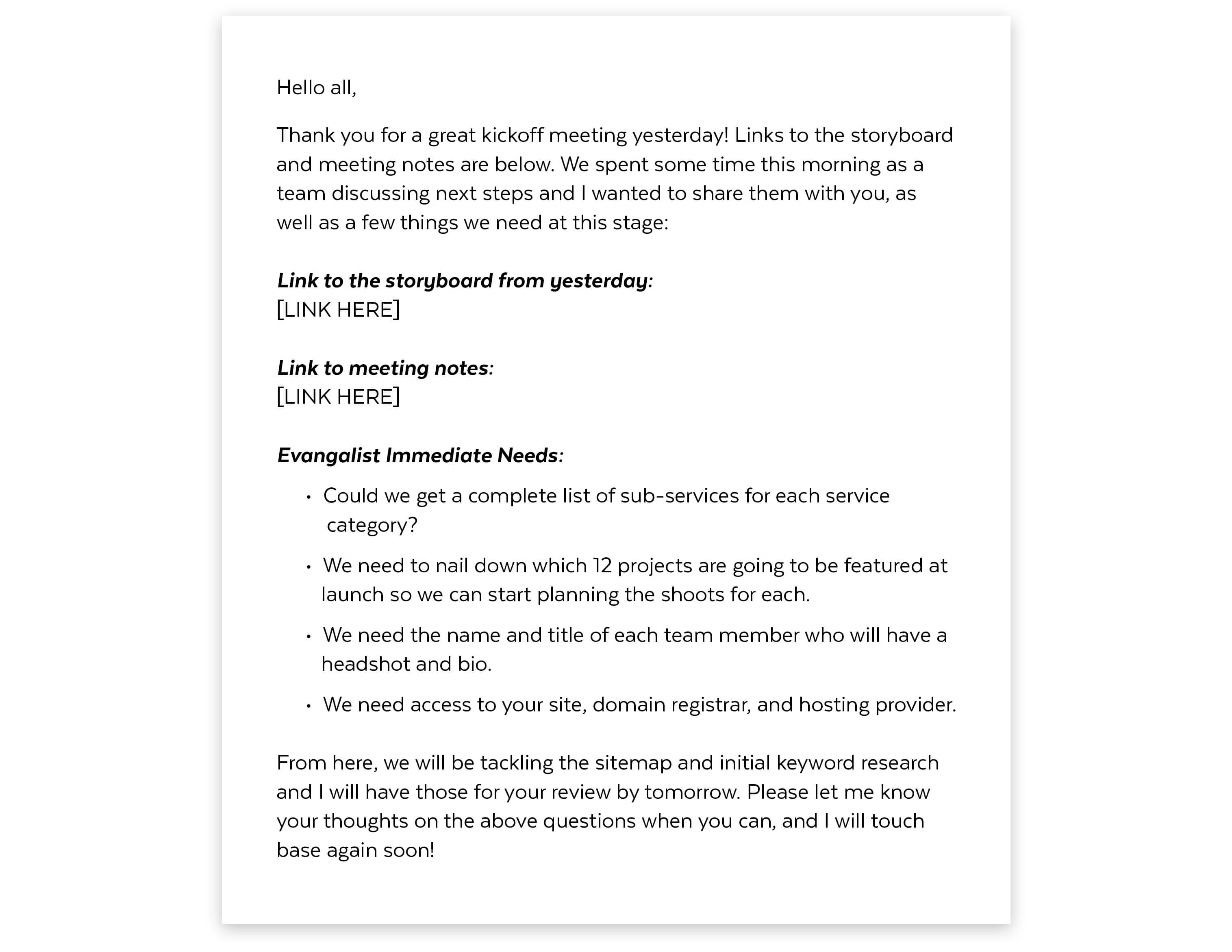The Subtle Art of Crafting an Email
A well-crafted email can save an account; at the very least, it assures your client that you’re on top of it. That they (and their investment) are in capable hands. Conversely, a poorly thought out message, even if it’s only intended to be transactional, can create confusion and open the project and the relationship up to failure.
The way we do business is changing. You don’t always have the luxury of face-to-face communication. How do you convey care and competence AND get what you need from your client when all you have is words and five minutes to write them? Here’s how:
Structure is Key
Whether it’s an email, a blog, or a webpage, when consuming digital content, people want to be able to scan. It’s just expected that electronic communication should be easy to digest, probably because we so often read it on our mobile devices while doing other things.
Because of this, I rely on a clear structure in almost every message I send. I wish I could take credit, but this structure is essentially the Aristotelian “triptych” we all learned in middle school debate – tell them what you’re going to tell them, tell them, and tell them what you told them. It breaks down like this:
- Brief greeting: This could be a throwaway space, but don’t waste it. A short but relational statement that shows you remember past conversations, both personal and professional, goes a long way in establishing trust.
- Purpose statement: A clear signpost of why you’re emailing them.
- Details: The information they need to complete the task you’ve given them (the link to the file for review, a note saying the deliverable is attached, etc.).
- Next steps: Do you need feedback, and if so, by when? What kind of feedback are you looking for? Does a meeting need to be scheduled? Help them help you by laying out clear expectations for where things go from here.
Formatting Is Your Friend
I send a lot of emails, and some of them are LONG. A predictable structure is one aspect of making a lengthy email easy to understand and respond to, but formatting within that structure is essential.
Think headers, bulleted lists, bolding and underlining, even the occasional (and I mean OCCASIONAL) use of all caps. I’m no graphic designer, but I understand the value of visual cues. These tools help to convey urgency and importance, and they aid understanding. Most of all, they make your message scannable (there’s that word again). Here’s an example of what I’m talking about:

With the simple addition of formatting, the client knows exactly where to look for each bit of info I lay out in my purpose statement, and they can quickly glean the most important points and take action.
Be Careful With Word Choice

How does this read to you? On the surface, the message is simple and direct. But your client might take offense to what could be perceived as a curt tone.
No pressure, but when it comes to written communication (digital or otherwise), word choice carries a lot of weight. Remember, you don’t have gestures, facial expressions, or tone of voice to mitigate or underscore your message. What might read to you like a good-humored joke could come across to a new client as snark. You might think you’re being brief and to the point; the client may hear annoyance.
There really isn’t one hard and fast rule that will help you avoid misunderstanding no matter what, but I always try to do the following to make sure the message I am sending is received in the way I intend:
- Avoid “like I said” phrases like “per my last email” or “as I said on our call.” They almost always come across as condescending and bothered.
- Don’t be afraid of a friendly exclamation point. The hard stop of a period can be a bit harsh sometimes, and simply switching it out for an exclamation point can change the way a sentence is read and received.
- Be nice. If you were talking to them in person, you would begin with some pleasantries and/or inquiries into how they are, and you would end with a warm goodbye. Do that in your emails, too.
Here’s that same message with these suggestions applied:

At General Public, we give a damn about everything we do, and that extends to something as seemingly minor as the emails we send. Successful messaging for a brand extends far beyond advertising or marketing collateral, and in our view includes smaller pieces of dialogue like emails or even the way stakeholders speak to one another.
Great, persuasive, consistent messaging has to start from the inside out, which is why we encourage you to set guidelines and brand standards for interpersonal corporate communication. One small piece of messaging, like an email, can make the difference between an account growing or ceasing to exist.
